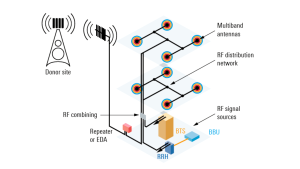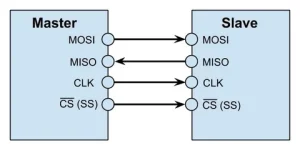The field of electronics and communication is witnessing a rising trend in multiple antenna systems. These setups incorporate several antennas at both the transmission and reception ends to amplify signal quality, capacity, and dependability. The four central designs for these configurations are MIMO (multiple-input, multiple-output), SIMO (single-input, multiple-output), SISO (single-input, single-output), and MISO (multiple-input, single-output).

MIMO garners the most attention among these configurations as it utilizes two or more antennas at both ends to harness multipath propagation for higher capacity and improved signal quality. Meanwhile, SIMO relies on one transmitter but numerous receivers while MISO uses various transmitters with only one receiver.
SISO boasts simplicity by using just one antenna on either end. This configuration can prove valuable when there is limited available space for an antenna or when cost considerations play a significant role. Comprehending such fundamental concepts concerning diverse multi-antenna configurations can enable engineers to design wireless communication systems that deliver efficient performance without compromising reliability.
Exploring MIMO, SIMO, SISO, and MISO Antenna Configurations
Contents
- 1 Exploring MIMO, SIMO, SISO, and MISO Antenna Configurations
- 2 Capacity and Throughput in Multiple Antenna Systems
- 3 The Role of Antennas in Wireless Communication
- 4 MIMO and SIMO/MISO: A Comparative Analysis
- 5 Advanced Antenna Technologies for MIMO and SIMO/MISO Systems
- 6 Utilizing Diversity Gain for Enhanced Signal-to-Noise Ratio
- 7 Optimizing Antenna Design for Maximum Channel Capacity and Reliability
The bewildering world of wireless communication has been forever changed by the advent of multiple antenna systems. These enigmatic configurations, including Single Input Single Output (SISO), Multiple Input Multiple Output (MIMO), Single Input Multiple Output (SIMO), and Multiple Input Single Output (MISO) all have their own unique properties to boggle the mind.

At its core, SISO is a straightforward setup that uses only one antenna at both the transmitter and receiver ends. But MIMO takes things up a notch with its use of multiple antennas on both sides simultaneously, resulting in an explosion of throughput and signal quality that’s sure to leave you reeling.
Meanwhile, SIMO employs multiple antennas at the receiver end but keeps things simple with just one antenna at the transmitter end. This seemingly paradoxical configuration allows for diversity gain – something that enhances signal-to-noise ratio by combating those pesky fading effects.
Then there’s MISO – another multi-antenna scheme that differs from SIMO in terms of which side it puts those antennas on; instead of receiving, they’re transmitting like nobody’s business! And as if all this weren’t enough, these advanced technologies can be optimized even further with beamforming techniques designed to direct energy towards specific areas or directions.
It’s clear that when it comes to wireless communication, antennas are key players in ensuring successful transmission and reception between devices. With complex designs like those found in MIMO systems drastically improving data rates compared to traditional single-antenna setups like SISO or even simpler multi-antenna schemes relying solely on diversity gain without any spatial multiplexing techniques employed during transmission/reception processes – well frankly my dear reader…it’s enough to make your head spin!
Capacity and Throughput in Multiple Antenna Systems
Perplexing and bursting with complexity, multiple antenna systems have emerged as the go-to solution for improving wireless communication. MIMO, SIMO, SISO and MISO configurations all utilize multiple antennas at both ends of transmission to enhance signal quality and increase data transfer rates.
The intricacies of these systems are mind-boggling: in a SIMO or MISO setup, multiple antennas can be used either at the transmitting or receiving end. A SIMO configuration transmits a single input through various antennas to bolster signal strength while in a MISO design signals from numerous inputs are received by just one antenna to improve reception quality.
Capacity and throughput are key factors in determining the effectiveness of these setups. Capacity refers to how much information can be transferred per unit time while throughput is concerned with actual data transmission rates achieved. Compared with traditional SISO setups which only use one antenna for transmitting/receiving signals, multiple-antenna configurations like SISO,MIMO,SIMO,and MISo can significantly increase capacity and throughput making them ideal for high-speed applications such as video streaming or online gaming.
Yet despite their potential benefits over traditional technologies, optimizing performance requires careful consideration during installation including proper placement of antennae ,appropriate selection of hardware components,careful calibration,and testing before deployment.Their performance depends on several factors too including channel conditions between transmitter-receiver pairs,the number of antennas used at each end,input power levels,sensitivity,distance between devices among others.Thus research has increased investment into developing technology that will further improve capabilities.
The Role of Antennas in Wireless Communication
Antennas, those mysterious devices that enable signals to travel wirelessly between devices, are essential components of modern communication. But did you know that using multiple antennas can work wonders for wireless systems? By employing MIMO, SIMO, SISO or MISO configurations, the performance of wireless networks can be drastically improved.
MIMO is particularly impressive as it utilizes multiple antennas at both the transmitter and receiver end to boost capacity and throughput. Simultaneously transmitting different data streams on separate channels enables a MIMO antenna configuration to increase information transmission by two or three times compared to traditional SISO setups.
In contrast, SIMO/MISO configurations employ one or more transmit/receive antennas for diversity gain which results in an enhanced signal-to-noise ratio. However, designing an effective antenna system involves optimizing various parameters such as frequency range, radiation pattern, polarization impedance matching and power handling capability.
To maximize performance gains from using multiple antennas advanced technologies like beamforming precoding spatial multiplexing channel estimation/feedback are employed too! With researchers continually exploring new materials and fabrication techniques for antenna components we’re excited about what’s next on the horizon for future wireless networks!
MIMO and SIMO/MISO: A Comparative Analysis
In the realm of wireless communication, two antenna technologies have emerged as game-changers: multiple input multiple output (MIMO) and single input multiple output (SIMO)/multiple input single output (MISO). But what sets them apart? MIMO employs a multitude of antennas to transmit/receive data over the same channel – an impressive feat indeed. Meanwhile, SIMO/MISO harnesses numerous antennas at either end to enhance signal quality and diminish interference.
Undoubtedly, one of the greatest advantages of MIMO technology is its spatial multiplexing capability. This translates into simultaneous transmission without requiring additional bandwidth or increased power consumption – mind-boggling stuff! Conversely, SIMO/MISO systems come in handy when fading poses a concern since they offer diversity gain that can help stave off undesirable effects.
Enter massive MIMO – an advanced iteration that calls for large arrays on both ends. The payoff is staggering: higher spectral efficiency, superior coverage and capacity compared to traditional MIMO setups. However, this cutting-edge technology demands significant complexity due to its considerable number of antennas.
When it comes down to it, both MIMO and SIMO/MISO play crucial roles in boosting signal-to-noise ratio (SNR), increasing transmission range and fostering channel capacity while reducing interference emanating from neighboring channels/frequencies/bandwidths – all contingent upon their specific applications within wireless communication networks. Therefore, engineers working with these technologies must grasp their strengths/weaknesses if they are designing systems for various types of wireless devices/applications; there’s simply no way around it!
Advanced Antenna Technologies for MIMO and SIMO/MISO Systems
The realm of wireless communication networks has undergone a complete overhaul, thanks to the advent of advanced antenna technologies. The MIMO and SIMO/MISO systems have paved the way for enhanced signal-to-noise ratio, reduced multipath fading, and increased throughput by mandating multiple antennas at both the transmitter and receiver ends.
While Single Input Multiple Output (SIMO) utilizes one antenna for transmission but several antennas for reception, Multiple Input Single Output (MISO) employs several antennas for transmission but only one antenna when it comes to reception. It’s perplexing how these two techniques work in diametrically opposite ways yet yield similar results!
In contrast, MIMO demands multiple input multiple output channels with more than one stream per channel to achieve high data rates. The process involves sophisticated coding techniques that enable the separation of each stream from different transmit antennas at the receiving end. These mind-bogglingly complex methods further aid cellular networks like 4G in maintaining radio link stability even when faced with harsh environments exhibiting severe multipath fading effects on transmitted signals!
Utilizing Diversity Gain for Enhanced Signal-to-Noise Ratio
The perplexing world of wireless communication systems demands the utilization of diversity gain as a crucial aspect for enhancing signal-to-noise ratio. The technique involves transmitting multiple copies of the same signal through different paths, creating an overwhelming burstiness at the receiver with varying phases and amplitudes. Through this method, interference is canceled out, and overall system performance is improved.
Transmitting diversely can be achieved by having a single antenna but sending multiple versions of the same signal with slight variations in timing or phase – receive diversity utilizes more antennas to capture various versions of transmitted signals from different paths. These techniques are widely recognized in 3G and LTE networks to combat interference and increase channel capacity.
SISO (single-input-single-output) is considered to be the simplest form of radio transmission that includes just one antenna configuration. However, technological advancements have led to more complex configurations such as MIMO (multiple-input-multiple-output), SIMO (single-input-multiple-output), and MISO (multiple-input-single-output). These multi-antenna systems offer redundancy while exploiting spatial multiplexing techniques that utilize diverse propagation paths for data transmission.
Overall, utilizing diversity gain guarantees reliable performance improvements in wireless communication systems – making it an essential tool!
Optimizing Antenna Design for Maximum Channel Capacity and Reliability
The perplexing world of wireless communication systems is heavily influenced by the design of antennas, which plays a pivotal role in maximizing channel capacity and link reliability. The placement and orientation of these antennas can have a significant impact on the transmitting and receiving capability of the system, making it imperative to choose wisely. Fortunately, multiple antennas provide an advantage as they are able to exploit array gain to improve signal strength, leading to enhanced spectral efficiency.
Enter 3GPP with their algorithms for optimizing antenna design to achieve optimum data throughput while preserving link reliability. These algorithms aim at decreasing interference from scattering and other sources that may lead to signal degradation. Through careful consideration of the number and type of antennas used in conjunction with advanced technologies such as beamforming and MIMO – directional transmission/reception through energy focus towards specific directions while rejecting signals from others coupled with utilization of multiple antennas on both transmitter and receiver ends respectively – we can increase spatial diversity thus improving overall performance without compromising maximum channel capacity or spectral efficiency.


